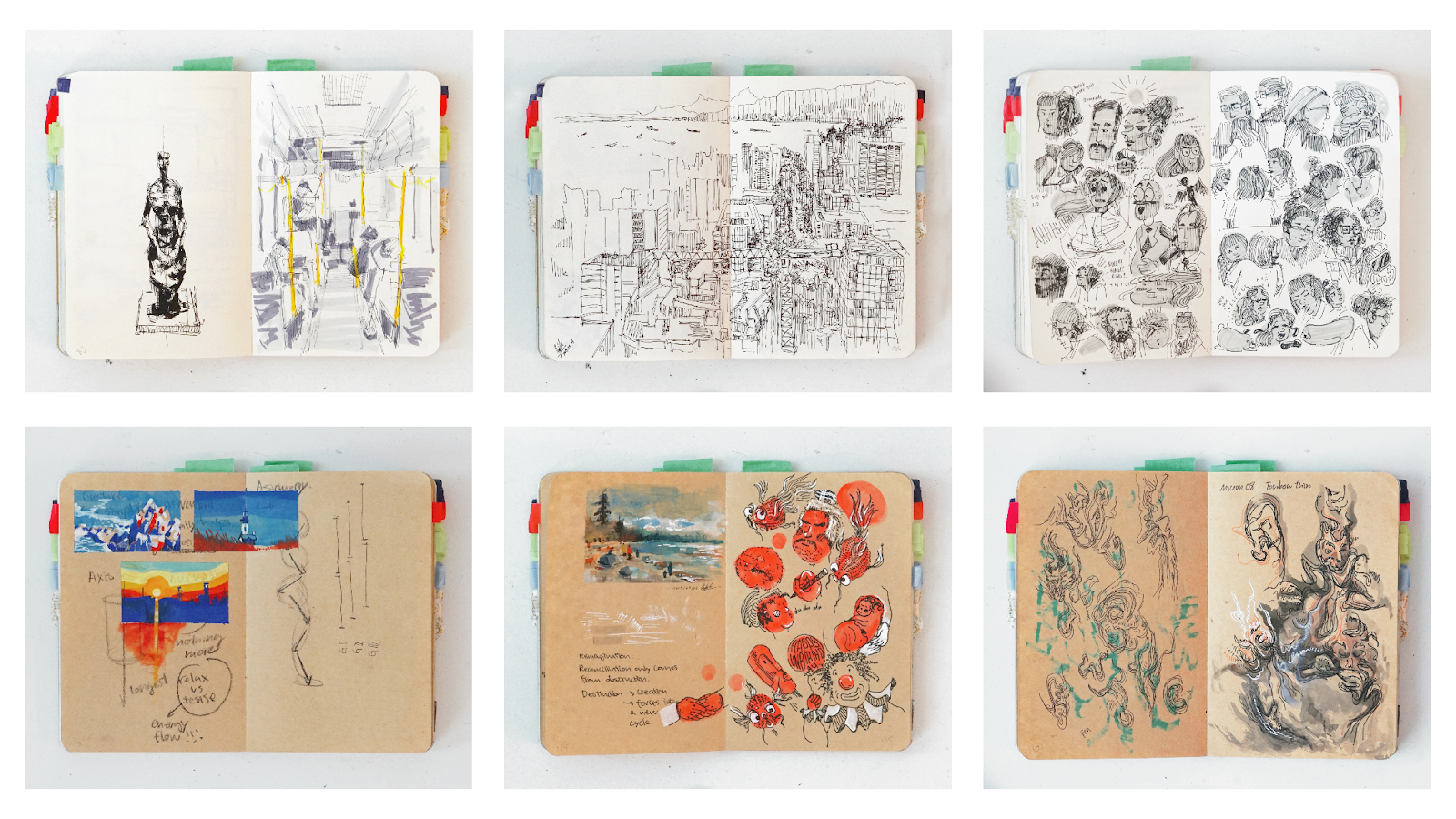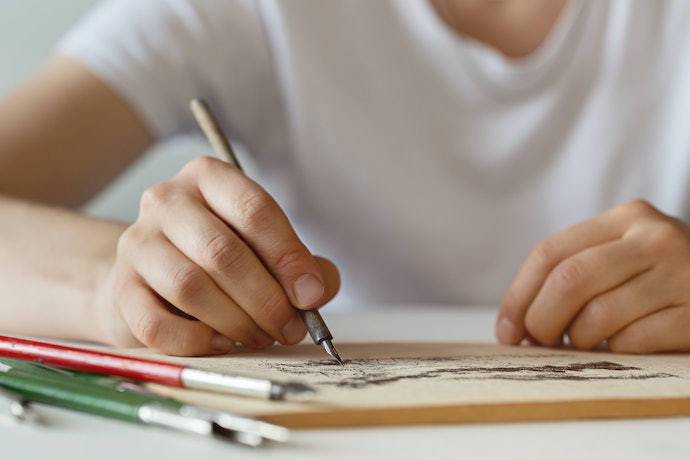A sketchbook isn’t much different than the planner in your bag or the phone in your backpocket. It is uniquely yours and should be incorporated into a part of your daily routine or even as a habit (a much more self-expressive one than checking your phone). Since keeping a sketchbook is very integral to developing and cultivating your artistic eye throughout the course, here is a guide to how to keep a sketchbook, along with some of the reasons as to why we sketch, as well as some best practices when getting your sketchbook started.
FINDING YOUR SKETCHBOOK
Sketchbooks come in various shapes, sizes, and mediums. Some people use old books, pocket-sized journals, or large notepads. We suggest finding a blank sketchbook that works for your everyday lifestyle (fits in your bookbag, purse, pocket, etc) so it goes wherever you go, readily available to capture your perspective as you experience life. You can find them at your local art shop, Michaels craft store, or online.
When choosing your sketchbook, keep in mind:
- Larger sketchbooks can be daunting to start out with but often are the most affordable.
- Travel-sized sketchbooks are great for being on the go, but can make your work feel cramped or constricted.
- Heavier paperweight sketchbooks allow for versatility in mediums. They can take paint, glue, and ink that typically bleeds through, however not affordable.
- It must be a physical sketchbook, iPads and drawing tablets defeat the purpose.
Whichever you choose, know that keeping a sketchbook is a personal journey, don’t let the format get in the way of you starting a sketching practice.
TOOLS
What you sketch with is completely up to you! We suggest a pencil or pen as the main tool you keep with you, but pastels, charcoal, watercolors, and paints can also add onto the expressive touch. A sketching pencil is best instead of a mechanical pencil as they tend to be thin and harder to control.
You can also go over your pencil or pen sketches with these tools afterwards to add color or more dimension—try not to spend too much time on a sketch before moving on to the next one.
GETTING STARTED
You can start by writing your name on the first page of your sketchbook, or skip that page altogether. You’ll want to start your sketchbook on a whole page spread for maximum space. Plus, that first page, for some of us, can feel intimidating.
In addition to the sketching activities you will do at Young Guns Academy, here are a couple prompts that can get you started right away with that first blank spread of your sketchbook:
- Daily Objects: Choose a common object from your daily life and sketch it from different angles.
- Nature Studies: Sketch various elements of nature like leaves, flowers, or shells.
- Character Design: Create sketches of original characters, either based on real people or entirely imagined.
- Gesture Drawing: Practice capturing the essence and movement of figures with quick gesture sketches.
- Landscapes: Immerse yourself in your environment and sketch landscapes or natural sceneries.
- Emotion Exploration: Depict different emotions through expressive facial expressions or body language.
- Architectural Details: Focus on intricate architectural details of buildings, bridges, or cityscapes.
- Animal Sketches: Sketch animals from reference images or from memory, experimenting with different poses.
- Texture Studies: Explore the textures of different materials like fabric, wood, or metal through sketching.
- Dream Journal: Sketch scenes from your dreams or fantasies, allowing your subconscious to guide your drawings.
…and so much more! A good way to keep your sketching habit maintained is to set yourself a measurable challenge, such as a few of such below:
- Do 3 sketches per week
- Fill the whole sketchbook in a month
- Draw a small sketch daily
A measurable challenge allows you to have a clear goal to work towards and helps you stay accountable to your sketching practice. By setting specific targets that you can aim for every day, week, or month, you establish a rhythm that keeps your creativity flowing. Additionally, combining these challenges with diverse prompts, such as daily objects, nature studies, or character designs ensures that your practice remains varied and engaging. Make sure you choose what feels doable to you and will keep you returning to your sketchbook. This will keep your creative and observant muscles in shape and you will see progress in how you interpret the world around you!
PERFECTION IS NOT PROGRESS
A sketchbook allows your perception of and engagement with the world around you to run free. Your work in your sketchbook is not about the perfect end product but about the process. Everything in your sketchbook should feel like a work in progress. To grow your drawing and interpretation skills it’s important to keep cultivating a consistent flow and dismiss all expectations of perfection.
Fear of failure will only stop you from starting. Try not to erase pencil lines that you feel are a mistake. Embrace the fact that each stroke is part of your interpretation of what you’re looking at or imagining. A sketchbook is a place where you can hone your drawing skills, and also a place to be as expressive and as messy as you want to be!

To sum up, whether you’re a seasoned creative or a beginner who wants to get started in arts, your sketchbook will be an invaluable company on your artistic journey through every triumphs or obstacles. Keeping a sketchbook and making sketching a routine will:
- Boost your creativity
- Keep your drawing and observational skills sharp
- Offer a safe space (for your eyes only) to experiment
- Allow you to create more work. Art breeds more art.
- Be your own inspiration—no need to always check pinterest or instagram, looking back through your sketchbooks can be just as inspirational
- Help you conquer your fear of starting aka fear of failure
Remember you are only ‘finished’ drawing when you fill that sketchbook. Then onto the next one! Happy sketching 😉

